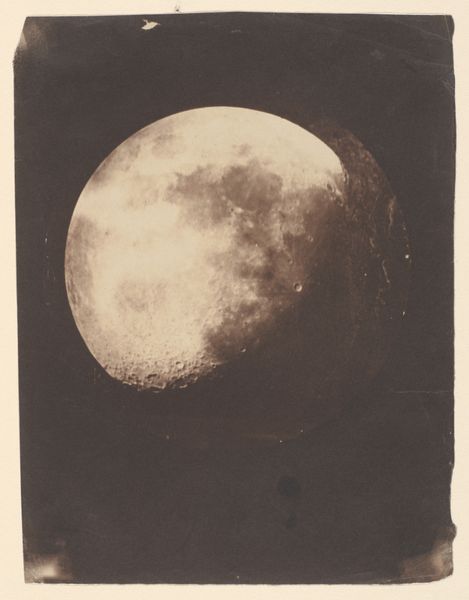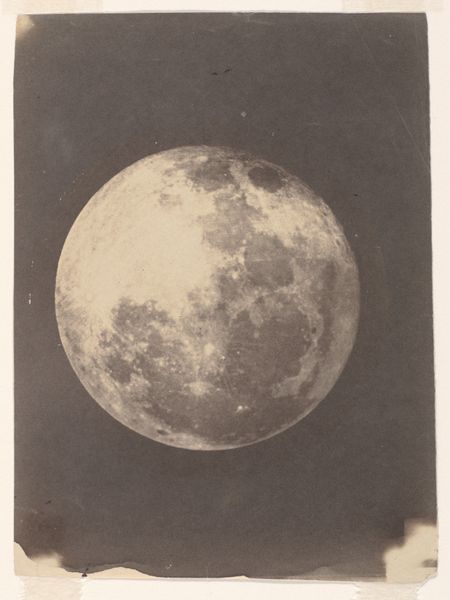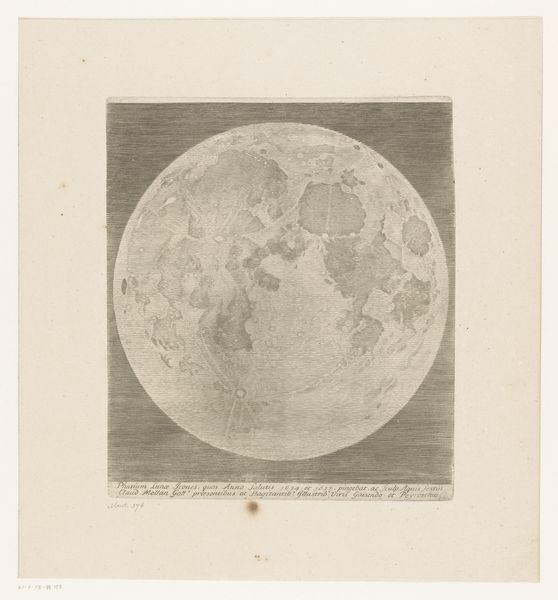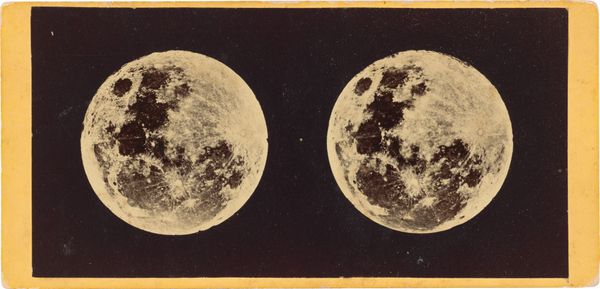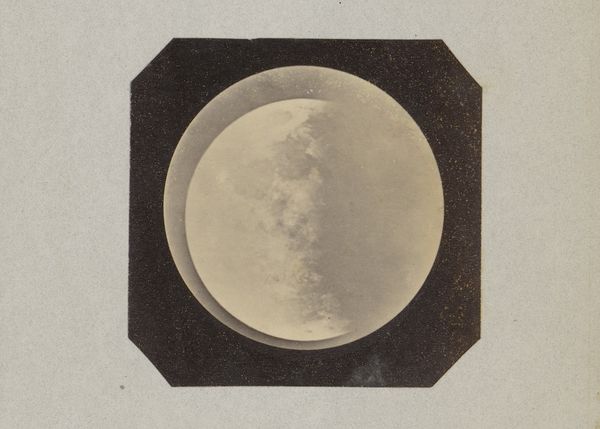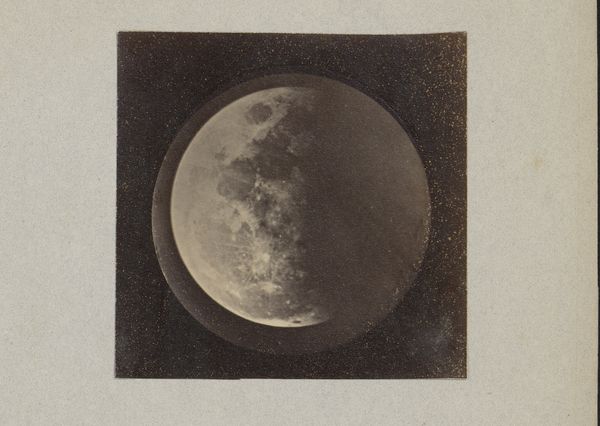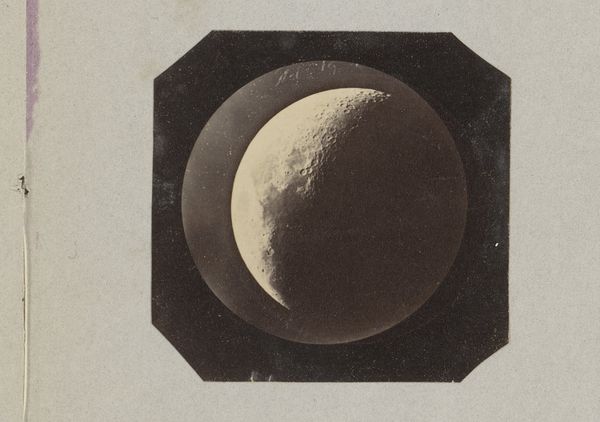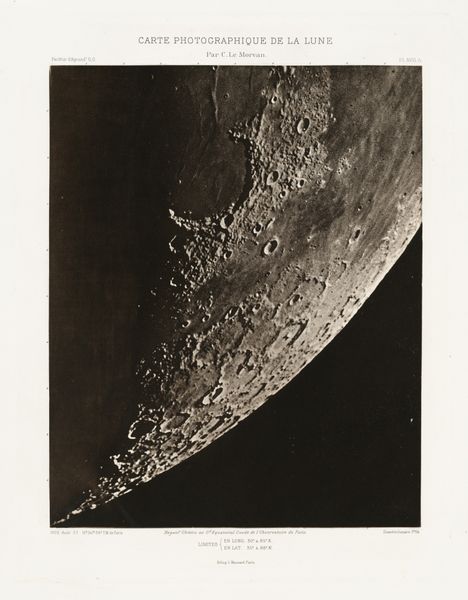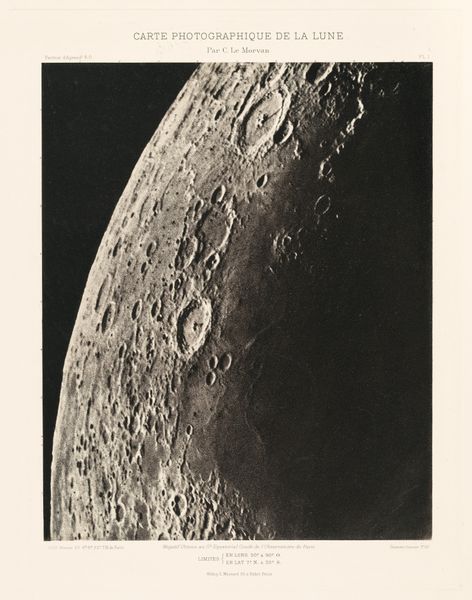
photography, gelatin-silver-print
#
landscape
#
photography
#
gelatin-silver-print
#
realism
Dimensions: Plate: 8 7/16 × 6 5/16 in. (21.4 × 16 cm) Sheet (approx.): 8 5/16 × 6 1/4 in. (21.1 × 15.8 cm)
Copyright: Public Domain
Editor: Here we have John Adams Whipple’s gelatin silver print, "The Moon," created sometime between 1857 and 1860. The contrast is striking; a glowing sphere dominates the dark rectangle. What do you see when you look at this work? Curator: Initially, the clear visual dominance of the orb’s shape asserts itself. Observe how the sharp tonal contrasts of the light reflecting on its rough surface define the form against a uniformly black void. This isolates the sphere, heightening its visual impact, but note the rough edges and imperfections of the photographic print itself. Do those textures suggest something to you? Editor: They feel like evidence of the early photographic process, but they're also integrated into the overall composition. They give it character. Is that right? Curator: Precisely. These aren’t merely flaws. They integrate the materiality of the artwork itself into our perception. Consider how the sharp, almost scientific, detail of the lunar surface is juxtaposed with the messy physicality of the medium itself, forcing us to confront both the image and object. Editor: So, the work is about the moon, but also about the photograph itself? Curator: Exactly. It prompts us to deconstruct the semiotics of early photography: its potential for objective recording versus the inherent limitations of the technology and the artistic intention in framing such an image. Notice how the photographer uses light to mold the form and give it depth. What impression do you think that careful consideration produces for the viewer? Editor: I see how the focus on light creates that effect, especially on the lower side, to accentuate its texture and presence. Thank you, I see so much more now! Curator: Indeed. The value in analyzing a work is often about learning to perceive it across both literal and more abstract levels.
Comments
No comments
Be the first to comment and join the conversation on the ultimate creative platform.

